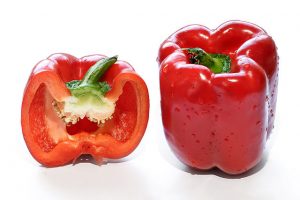Dirty Dozen List 2017 & the Clean Fifteen 2017 List
 The Environmental Working Group released it’s 2017 Dirty Dozen list and it highlights the importance that there is still a lot of work to do when it comes to cleaning up the food chain.
The Environmental Working Group released it’s 2017 Dirty Dozen list and it highlights the importance that there is still a lot of work to do when it comes to cleaning up the food chain.
This year, the annual report found that almost 70 percent of 48 non-organic samples tested positive for at least one pesticide. (In many cases, the numbers were much higher.) And get this – a single strawberry sample harbored 20 different pesticide residues.
And while spinach nutrition is loaded with calcium and vitamins, there’s one reason to always try to choose organic. Researchers found DDT, a neurotoxic insecticide banned in the U.S., in an alarming number of samples.
A “Clean 15” list is also included in the report, identifying the non-organic produce least likely to be contaminated with pesticide levels. I advise choosing and growing organic as often as possible, but if you’re on a budget or your selection is limited, these lists help you focus your attention on avoiding the most contaminated fruits and veggies.
Key Findings of the 2017 Dirty Dozen Report
- More than 98 percent of samples of strawberries, spinach, peaches, nectarines, cherries and apples tested positive for residue of at least one pesticide.
- A single sample of strawberries showed 20 different pesticides.
- Spinach samples had, on average, twice as much pesticide residue by weight than any other crop.
- Avocados and sweet corn were the cleanest: only 1 percent of samples showed any detectable pesticides.
- More than 80 percent of pineapples, papayas, asparagus, onions and cabbage had no pesticide residues. (Note: Some papayas are GMOs. Choose organic to avoid that.)
- No single fruit sample from the Clean Fifteen tested positive for more than four types of pesticides.
The 2017 Dirty Dozen List & Clean 15 List
EWG’s 2017 Dirty Dozen
- Strawberries
- Spinach
- Nectarines
- Apples
- Peaches
- Pears
- Cherries
- Grapes
- Celery
- Tomatoes
- Red Capsicum
- Potatoes
EWG’s 2017 Clean 15
The Clean 15 list includes produce that is least likely to be contaminated by pesticides. Here’s the 2017 Clean 15 List:
- Sweet Corn
- Avocados
- Pineapples
- Cabbage
- Onions
- Frozen Sweet Peas
- Papayas
- Asparagus
- Mangos
- Eggplant
- Honeydew
- Kiwi
- Rock Melon
- Cauliflower
- Grapefruit
Some sweet corn and are GMOs, so choose organic to avoid GMO versions of these crops.
Final Thoughts on EWG’s 2017 Dirty Dozen List
- EWG released its annual Dirty Dozen and Clean 15 lists, highlighting the fruits and vegetables most and least likely to harbor pesticide residues.
- Strawberries are high on the contamination list again this year, but spinach and pears were also highlighted for extreme pesticide residues.
- This list should in no way deter you from eating fruits and vegetables, but it should make you wary of modern chemical farming. Using chemicals to fumigate the soil and kill weeds, microbes and bugs has some unwanted side effects, including killing soil health and beneficial microbes.
- Pesticides are linked to dozens of health problems, including certain cancers, symptoms of ADHD, autism, Parkinson’s and a whole host of other issues.
